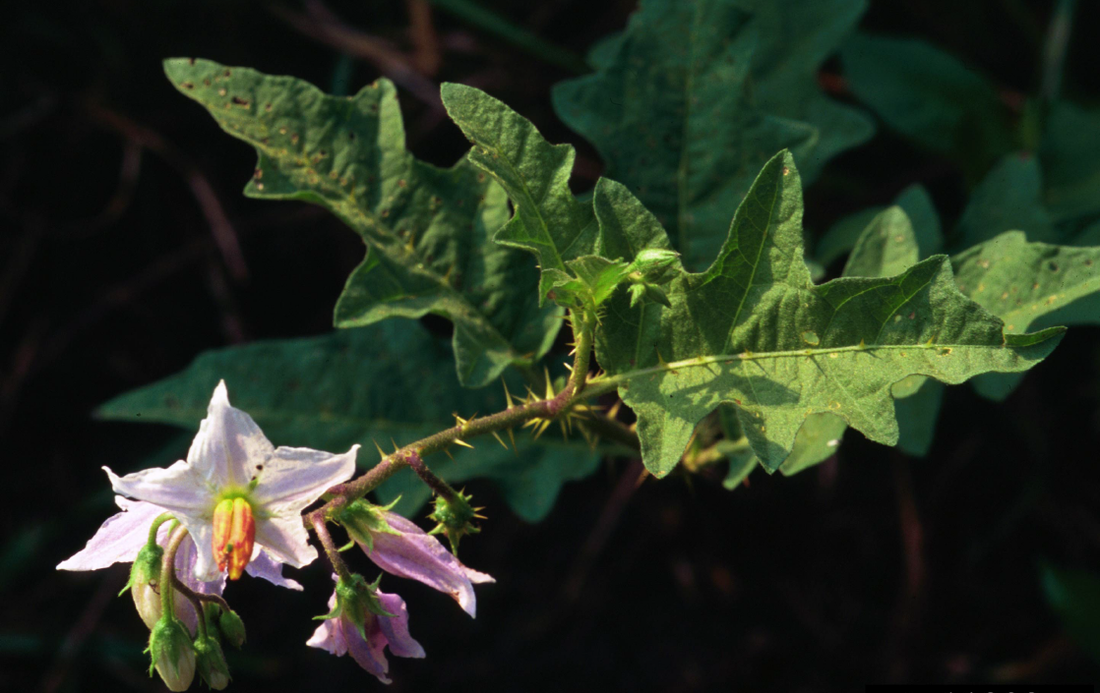|
Last week, our department welcomed visiting scientist, Dr. Nora Underwood to present her lab’s research at our weekly colloquium seminar. And although Dr. Underwood hails from Florida State University, whose football team defeated the Terps 63-0 in a record setting game a few short weeks ago, she was warmly received by a packed house here at the University of Maryland. This is surely due, in no small part, to Dr. Underwood’s connection to two of our own who came to us from her lab. Graduate student, Alex Forde (Gruner Lab) and post-doc Amanda Buchanan (Hooks Lab) both hail from the Underwood lab as former lab tech and graduate student, respectively. However, the real draw for most of the crowd was surely the topic of plant-insect interactions, which is an area of research shared by many labs within our own department. Dr. Underwood’s presentation came to us in two parts, and although there was an admission of disconnect between the topics, there is one theme that bridges the divide, and that is an addiction to pursuing questions with huge, field-based studies. The first half was a discussion of a large study exploring mechanisms of changes to a plant population resulting from damage inflicted by insect herbivores. Every farmer, gardener, and even grad student knows that plants don’t grow too well when insects are eating them. However, this study seemed to stem from being dissatisfied with simply acknowledging that insect herbivores are bad for plant populations, and the need to know exact reasons why insect herbivory might cause plant populations to decline. To address these questions, Dr. Underwood and colleagues experimented with populations of horsenettle (Solanum carolinense), measuring growth, fecundity, asexual reproduction, and rates of herbivory over two years for each individual plant, all while manipulating plant densities and herbivore abundances. The idea behind measuring all of these demographic factors rather than simply measuring a change in biomass was to get at how and not just whether insect damage leads to change in the population. For example, a perennial plant population may decline from one year to the next because some plants were killed, because there were fewer energy reserves in the roots of overwintering plants, because there was decreased seed production, or because there were fewer “runners” produced asexually. To be able to answer these questions, though, requires compiling a massive dataset of all these demographic factors, and then using stage-structured demographic models to show how each factor is affected by different levels of herbivory. For more information on this study, see Dr. Underwood’s publication in the journal Ecology (Underwood & Halpern 2012). 
Dr. Nora Underwood’s research involves following the growth and development of each individual in populations of this plant, Carolina horsenettle (Solanum carolinense), in order to learn about how effects of plant density and insect herbivory interact. Photo Credit: Ted Bodner, Southern Weed Science Society, Bugwood.org
The second half of the talk introduced a new framework for studying associational effects within plant communities. Associational effects account for how the struggle for plants to avoid being eaten by insect herbivores occurs within a complex matrix of other species of plants, and that plant insect interactions involve more than just the interaction of the insect and the focal plant. In other words, if you are a plant, how susceptible you are to herbivores may depend on who your neighbors are? The effects that neighboring plants can have on the species in focus have been described many different ways. For example, neighboring plants may produce volatile chemicals that limit an insect’s ability to find the focal plant, which would result in lower herbivory rates. On the other hand, neighboring plants may serve as a host to many species of herbivores that also feed on the focus plant species, making it more susceptible to attack from herbivores. Dr. Underwood presented a novel framework for studying these kinds of effects on herbivory rates between neighboring plant species as a way to tease apart mechanisms underlying the effects. In doing so, Dr. Underwood has also signed up her lab for even more large, field based experiments, because to differentiate between effects of density of the focal species and density of the neighboring species, both have to be changed simultaneously. Fortunately, horsenettle is probably more than willing to oblige, as it is a noxious weed throughout much of the United States. This fact also helps the Underwood lab to walk the thin line between basic and applied ecological research, as the results of these experiments are useful not only from the standpoint of our basic understanding of how plants and insects interact in nature, but in informing us of ways to manipulate the landscape to reduce damage to focal species like crops, or ornamentals. More information in this new framework can be found in a new publication by Dr. Underwood and others, which will be out some time next year (Underwood et al. 2014). Underwood, N. and S. Halpern. 2012. Insect herbivores, density dependence, and the performance of the perennial herbSolanum carolinense. Ecology 93(5): 1026-1035. Underwood, N., B.D. Inouye and P.A. Hambäck. 2014. A conceptual framework for associational effects: when do neighbors matter and how would we know? Quarterly Review of Biology: in press. About Alan:
Alan Leslie is a Ph.D. candidate in the Lamp Lab, studying aquatic macroinvertebrates and their effects in regulating ecosystem functions. His research project is focused on determining the effect that burrowing aquatic invertebrates have on nutrient transport in agricultural drainage networks. Comments are closed.
|
Categories
All
Archives
June 2024
|
Department of Entomology
University of Maryland
4112 Plant Sciences Building
College Park, MD 20742-4454
USA
Telephone: 301.405.3911
Fax: 301.314.9290
University of Maryland
4112 Plant Sciences Building
College Park, MD 20742-4454
USA
Telephone: 301.405.3911
Fax: 301.314.9290

 RSS Feed
RSS Feed




